Table of Contents
Embarking on a culinary journey through Saudi Arabia unveils a captivating tapestry of flavors and cultural heritage. The food from Saudi Arabia, influenced by Middle Eastern, North African, and Persian traditions, offers a delightful fusion of tastes. From beloved traditional dishes to tantalizing street cuisine, Saudi Arabian food is a treasure trove of mouthwatering delights that showcase the richness of its food culture. Let’s explore this diverse and vibrant world of Saudi Arabian food culture.
Top Ingredients of Saudi Arabian Cuisine
In Saudi Arabian cuisine, a rich tapestry of flavors is created through the skillful combination of various ingredients. Here is a list of the most commonly used ingredients that form the backbone of Saudi Arabian culinary traditions:

Rice: A staple in Saudi Arabian cuisine, rice is often served with various dishes and can be prepared in different ways, such as Kabsa (spiced rice with meat) or Mandi (rice cooked with meat and aromatic spices).
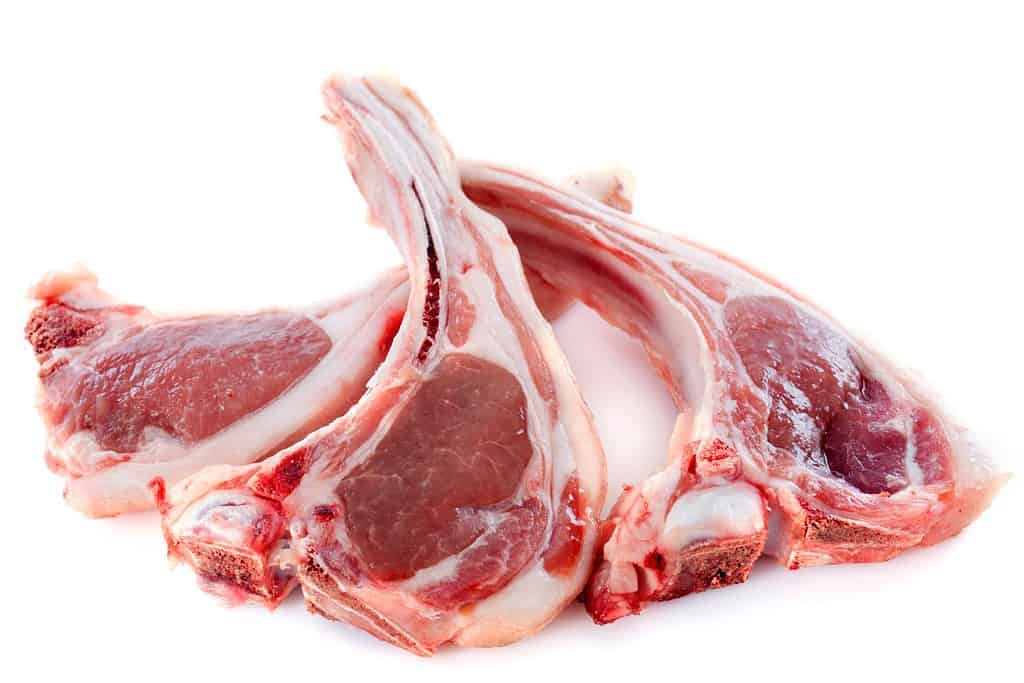
Lamb and Chicken: Lamb and chicken are popular meats in Saudi Arabia and are key ingredients in many traditional dishes like Shawarma, Kabsa, and Samboosa.

Spices: Saudi Arabian cuisine incorporates a variety of aromatic spices, including cardamom, cinnamon, cloves, black lime, and nutmeg, which add depth and flavor to their dishes.

Yogurt: Yogurt is an essential part of Saudi Arabian cuisine and is used as a sauce (Dahi), a dip (Labneh), or as a marinade for meat.

Onions and Garlic: These two ingredients form the base of many Saudi dishes, providing a savory foundation to build upon.
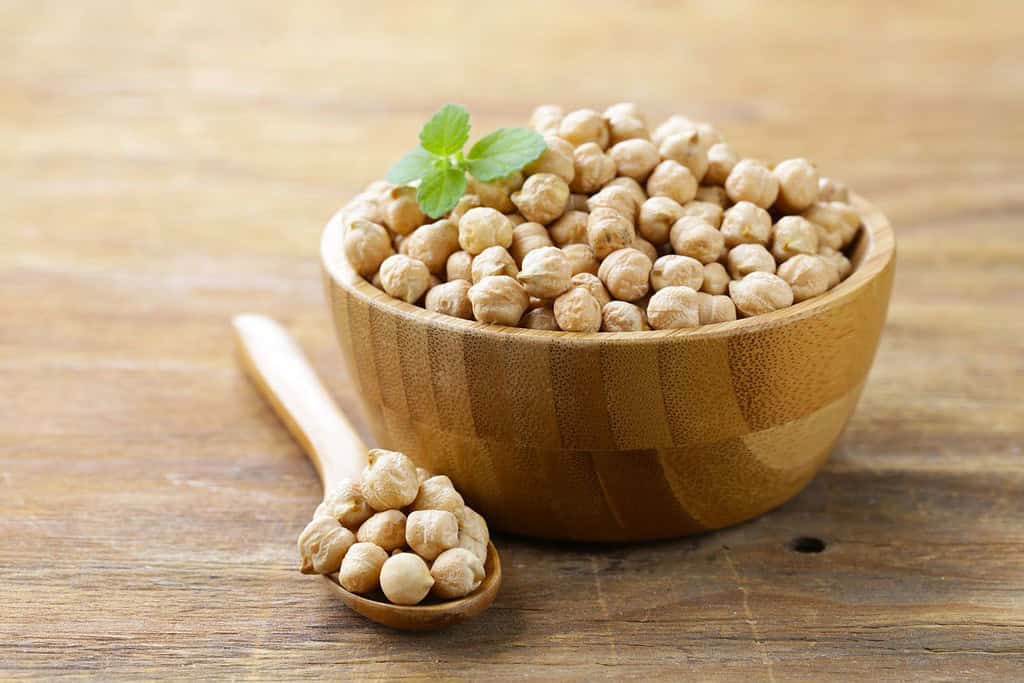
Chickpeas: Chickpeas are a versatile ingredient used in soups, stews, and dishes like Falafel and Hummus, lending a creamy and nutty taste.

Tomatoes: Tomatoes are frequently used in Saudi Arabian cuisine to add tanginess and depth to stews, rice dishes, and salads.

Parsley and Coriander: Fresh parsley and coriander are popular herbs in Saudi cuisine, used to add a refreshing and aromatic touch to salads, sauces, and meat dishes.

Dates: Dates are a significant element of Saudi Arabian cuisine and are often enjoyed as a sweet treat or used in desserts, such as Ma’amoul and Date-filled pastries.

Saudi Arabian Flatbread (Khobz): Bread is a fundamental part of Saudi meals, and Khobz is the most common type, served with various dishes like Kabsa, Shawarma, and grilled meats.
These ingredients, along with a variety of herbs, spices, and other regional produce, contribute to the diverse and captivating flavors found in food in Saudi Arabian culture.
The diversity of food from Saudi Arabian cuisine
Saudi Arabian cuisine offers a captivating variety of flavors and dishes that reflect the nation’s rich history and cultural diversity. Influenced by Middle Eastern, North African, and South Asian culinary traditions, Saudi food provides a unique blend of ingredients and techniques. One of the most renowned dishes is Kabsa, a fragrant combination of long-grain rice cooked with tender chicken or lamb, aromatic spices, and vegetables. This dish epitomizes Saudi hospitality and is often served at celebratory events. Another beloved Saudi specialty is Mandi, a flavorful rice dish served with tender roasted meat, often chicken or lamb, and accompanied by a spicy tomato-based sauce.
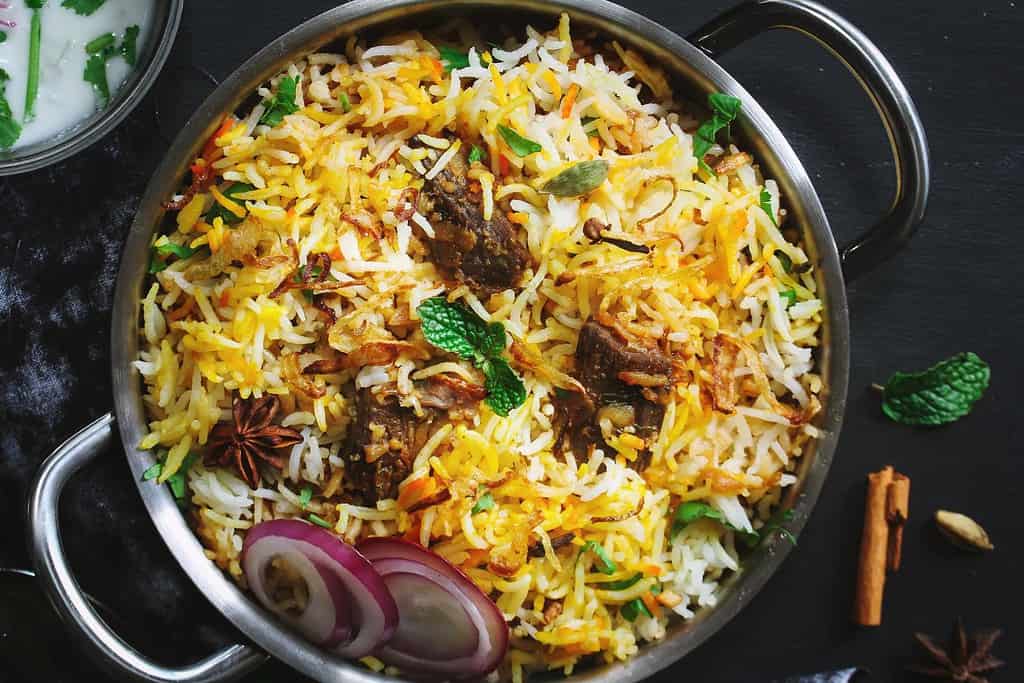
The heartiness of Saudi cuisine is exemplified in its grilled Kebabs, prepared with various meats like lamb, chicken, or beef, marinated in a delightful blend of spices. The country’s love for stews is evident in dishes like Samboosa, savory pastries filled with minced meat, vegetables, and an assortment of spices. For a vegetarian option, Mutabbaq stands out, featuring layers of thin pastry filled with a mixture of vegetables and spices, offering a crispy texture and flavorful experience.
Satisfying the sweet tooth, Saudi cuisine presents delightful desserts like Kunafa, a sweet pastry made from thin noodle-like strands soaked in sugar syrup and layered with cheese or nuts. The diversity of Saudi food is further exhibited in its regional specialties, with each area showcasing distinct recipes and culinary techniques. Whether indulging in the succulent flavors of a Kebab or relishing the comforting taste of Mandi, exploring the variety of Saudi Arabian cuisine is an adventure in cultural richness and gastronomic pleasure.
While visiting beautiful Saudi Arabia, you can try all of the best recipes from the region. We have available a wide range of tours in Saudi Arabia that you can choose to explore the country’s culinary delights and cultural heritage.
Best Foods in Saudi Arabia
Saudi Arabian cuisine offers a diverse range of dishes that delight the senses with their exquisite flavors and cultural significance. While it’s challenging to pinpoint a definitive list of the “best” foods, some dishes hold a special place in the hearts of Saudi Arabian cuisine enthusiasts.
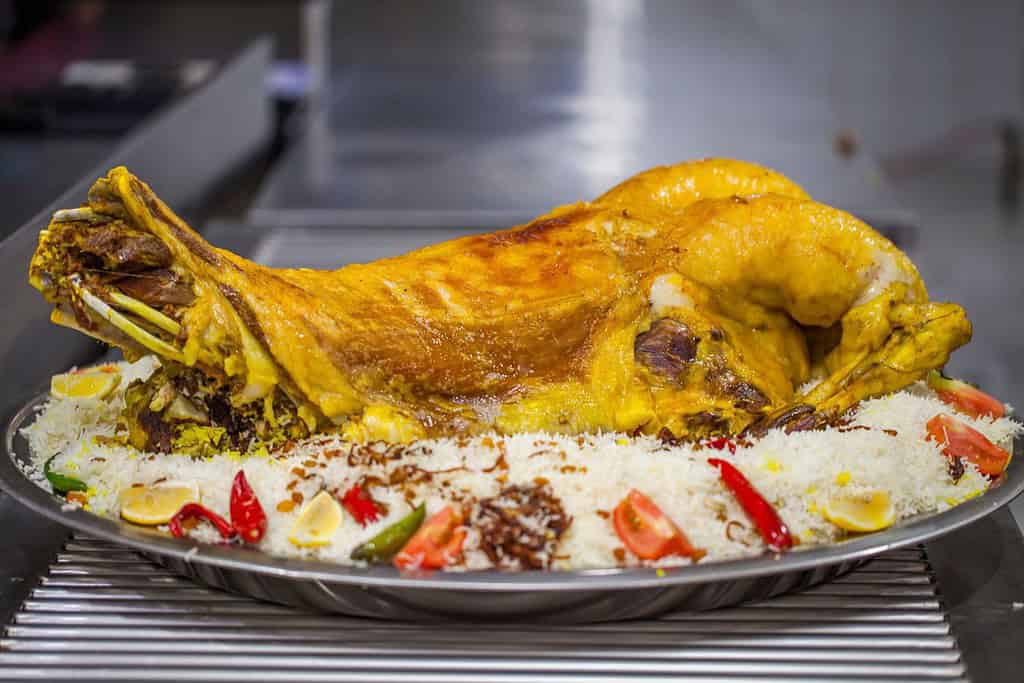
Saudi Arabian cuisine is renowned for its skillful use of spices, including cumin, coriander, cardamom, turmeric, cloves, cinnamon, ginger, garlic, chilies, saffron, black pepper, and dried mint, which infuse its dishes with richness and depth of flavor. The result is a harmonious fusion of aromatic spices and vibrant herbs that elevate Saudi Arabian cuisine to a truly exceptional level.
Most famous Saudi Arabian foods
Here are the top most famous foods in Saudi Arabia that have garnered recognition both locally and internationally:
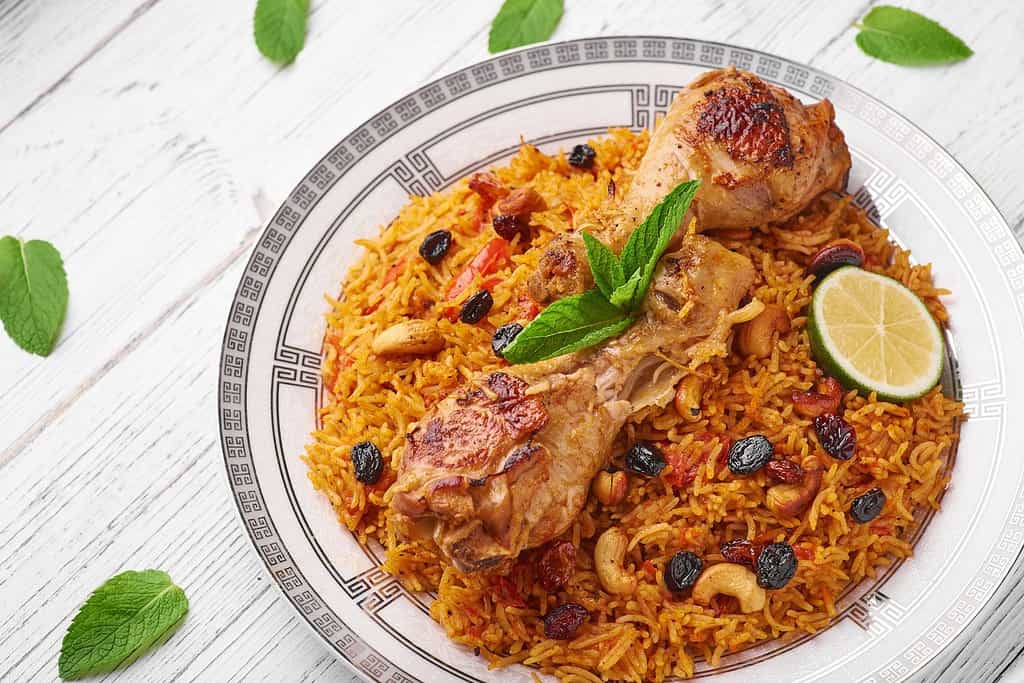
Kabsa: Often considered the national dish of Saudi Arabia, Kabsa is a flavorful rice dish featuring long-grain rice cooked with tender meat, fragrant spices, and sometimes vegetables. It embodies the perfect balance of spices, making it a favorite at gatherings, weddings, and celebrations.

Mandi: Mandi is another iconic Saudi Arabian dish, consisting of tender, slow-cooked meat (usually lamb or chicken) and fragrant rice. It is cooked using a special blend of spices and served with a flavorful tomato-based sauce.

Shawarma: Shawarma is a popular street food in Saudi Arabia. It consists of thinly sliced marinated meat (typically beef, chicken, or lamb) wrapped in flatbread and topped with garlic sauce, tahini, vegetables, and sometimes pickles. Shawarma is known for its delicious, savory flavor.

Mutabbaq: Mutabbaq is a delightful stuffed pastry filled with various ingredients such as spiced minced meat, onions, or vegetables. It’s fried until crispy and is a favorite snack or appetizer in Saudi Arabia.

Jareesh: Jareesh is a traditional Saudi Arabian dish made from crushed and fermented wheat. It is often cooked with meat or chicken, along with a blend of aromatic spices. Jareesh has a unique texture and a rich, comforting flavor.

Samboosa: Samboosa, also known as Samosa in some regions, is a beloved savory pastry filled with spiced meat, vegetables, or lentils. These triangular snacks are deep-fried until golden brown and are commonly enjoyed as a popular appetizer.
These renowned Saudi Arabian dishes showcase the rich culinary heritage of the country, reflecting the diverse flavors and traditions that are cherished not only within Saudi Arabia but also among food enthusiasts worldwide.
Saudi Arabian Desserts
Saudi Arabian desserts offer a delightful conclusion to a satisfying meal, showcasing a blend of sweet flavors and delicate textures. These desserts are deeply rooted in Saudi Arabian culture and are often enjoyed during celebrations, festivals, and special occasions. Some popular Saudi Arabian desserts include:

Qatayef: Qatayef is a popular dessert enjoyed during Ramadan and other festive occasions in Saudi Arabia. These small, stuffed pancakes are filled with various sweet fillings like cream, nuts, or cheese. They are typically folded into a half-moon shape and then fried or baked before being soaked in sugar syrup.

Luqaimat: Luqaimat are deep-fried sweet dumplings that are crispy on the outside and soft on the inside. They are often drizzled with date syrup or honey and sprinkled with sesame seeds, making them a favorite dessert during Ramadan and Eid celebrations.

Basbousa: Basbousa is a semolina cake soaked in sugar syrup, flavored with rosewater or orange blossom water, and garnished with almonds or coconut flakes. It’s a moist and sweet dessert commonly served at family gatherings and special occasions.

Date-filled Ma’amoul: Ma’amoul are shortbread-like cookies filled with sweet date paste. They are intricately molded into various shapes and sizes and are a cherished dessert during religious holidays, such as Eid.

Mutabbaq: Mutabbaq is a flaky pastry filled with a mixture of nuts, sugar, and spices. It’s often fried until golden brown and can be enjoyed as a sweet snack or dessert in Saudi Arabia.
These Saudi Arabian desserts reflect the rich culinary traditions of the country and are a delightful way to end a meal while experiencing the culture and flavors of Saudi Arabia.
The culture behind Saudi Arabian food
The culture behind Saudi Arabian food is deeply rooted in tradition, hospitality, and community. Saudi Arabian cuisine reflects the country’s rich history and diverse cultural influences, blending elements from Arabian, Middle Eastern, and North African culinary traditions. Food holds significant cultural importance in Saudi Arabia and plays a central role in social gatherings, family events, and religious celebrations.
Hospitality is a cornerstone of Saudi Arabian culture, and sharing food with guests is a deeply ingrained tradition. When visitors arrive at a Saudi Arabian home, they are warmly welcomed with an array of delicious dishes, reflecting the host’s generosity and desire to make their guests feel at home. Meals are often communal affairs, with everyone seated around a shared plate, emphasizing the importance of togetherness and solidarity in Saudi Arabian culture.
Also, read:
Riyadh, Jeddah, and Mecca

Embark on a culinary journey through Riyadh, Jeddah, and Mecca, and immerse yourself in the captivating flavors that have been crafted and cherished for generations in Saudi Arabia. Let the traditional foods of each city paint a flavorful picture of Saudi Arabia’s culinary tapestry, inviting you to savor the unique delights of these remarkable regions.
Within the enchanting world of Saudi cuisine, each region brings its own distinct flavors and culinary traditions. Let’s embark on a journey to Riyadh, Jeddah, and Mecca, and discover the delightful differences in their traditional foods.
The differences in dishes from each Saudi city can be attributed to a combination of factors, including geography, historical influences, and the majority ethnic group residing in each region. Saudi Arabia’s diverse landscape, from deserts to coastal areas, has influenced the availability of certain ingredients and agricultural practices in different regions. This, in turn, has contributed to variations in the types of dishes that have evolved in each city.
Riyadh’s Kabsa features fragrant rice cooked with tender lamb or chicken, aromatic spices, and a medley of vegetables, epitomizing Saudi Arabian hospitality. Jeddah’s Samboosa takes a flavorful twist on a popular snack, combining ground meat or vegetables with exotic spices, wrapped in delicate pastry sheets and deep-fried to perfection. Mecca’s Jareesh offers a unique take on porridge, with crushed wheat cooked to a creamy consistency, often served with rich lamb stew.
For example, in Riyadh, being the capital and a hub of cultures, the culinary scene is more diverse and influenced by a mix of traditions from various regions. Jeddah, with its coastal location and international influences, has culinary inspirations from these factors, leading to distinct dishes like Samboosa. In Mecca, the local traditions and influences from pilgrims visiting the holy city shape the cuisine, resulting in unique dishes like Jareesh.
Comparing the three cities, Riyadh offers a diverse range of dishes influenced by its cosmopolitan nature, Jeddah highlights delicious snacks and appetizers, and Mecca provides a taste of its distinctive holy city cuisine. Each city showcases its own culinary identity, adding depth to the multifaceted and rich tapestry of Saudi Arabian cuisine.
Riyadh

Embarking on our culinary journey in Riyadh, the capital city of Saudi Arabia, we are welcomed into a vibrant food scene that reflects the country’s rich cultural influences. The city offers a fusion of traditional Saudi Arabian dishes and international flavors. As we explore the bustling markets and street food stalls, the scent of freshly baked bread and grilled meats fills the air. Riyadh’s food culture is a diverse blend of tastes, featuring a wide range of dishes to satisfy every palate.
Famous food from Riyadh
- Kabsa: A fragrant rice dish cooked with lamb, chicken, or fish, seasoned with aromatic spices and garnished with almonds and raisins, representing Saudi hospitality.
- Manti: Tiny dumplings filled with spiced ground meat and onions, served with a tomato-based sauce and yogurt.
- Thareed: A savory stew made with lamb or chicken, vegetables, and tomatoes, often enjoyed with flatbread.
- Sambousek: Stuffed pastries filled with various fillings like meat, cheese, or vegetables, served with dipping sauces.
- Harira: A hearty soup made with lentils, vegetables, and flavored with various spices.
- Roz Bel Laban: A creamy rice pudding flavored with cardamom and topped with pistachios or almonds.
Jeddah

Continuing our journey to Jeddah, a coastal city known for its diverse culinary traditions, we find ourselves immersed in the flavors of traditional Saudi Arabian cuisine with an emphasis on fresh seafood and delectable desserts. Jeddah’s cuisine embraces bold flavors and locally sourced ingredients, offering a unique gastronomic experience.
Famous food from Jeddah
- Samboosa: Deep-fried pastries filled with a variety of fillings, such as minced meat, vegetables, or cheese.
- Mutabbaq Samak: Spiced fish fillets wrapped in thin pastry and fried to crispy perfection.
- Harees: A creamy porridge made with wheat and chicken, often enjoyed during Ramadan.
- Balaleet: A sweet and savory dish featuring saffron-infused vermicelli noodles topped with an omelette and served with date syrup.
- Qursan: A delicious sesame seed dessert, often enjoyed as a sweet treat.
Abha

Our culinary journey concludes in Abha, a city nestled in the Asir region of Saudi Arabia, known for its unique and robust dishes. Abha’s cuisine is characterized by its bold use of spices and mountainous influence, creating dishes that tantalize the taste buds with an array of flavors.
Famous food from Abha
- Abha Kabsa: A sumptuous rice dish prepared with lamb, raisins, and carrots, distinct from other Kabsa variations.
- Sangak: A traditional Saudi flatbread, often served as a staple with various dishes.
- Shawarma Abha: Spiced and marinated meat slices, typically served in flatbreads with tahini sauce.
- Kabab-e-Mandi: Tender marinated meat skewers, grilled to perfection and served with rice or flatbread.
- Harees Abha: A hearty wheat and chicken porridge, enjoyed as a comforting meal.
- Shallot Lamb: A flavorful lamb dish featuring shallots cooked to perfection, providing a sweet and tangy taste.
- Basbousa: A semolina cake soaked in rosewater or orange blossom syrup, topped with almonds or coconut flakes, a delightful dessert to end your culinary journey in Abha.
Book Your Trip to Saudi Arabia Today!
Embark on an unforgettable journey and explore the allure of Saudi Arabia through our exclusive tours.
More About Saudi Arabia
[the-post-grid id=”50418″ title=”Saudi Arabia Main page”]
